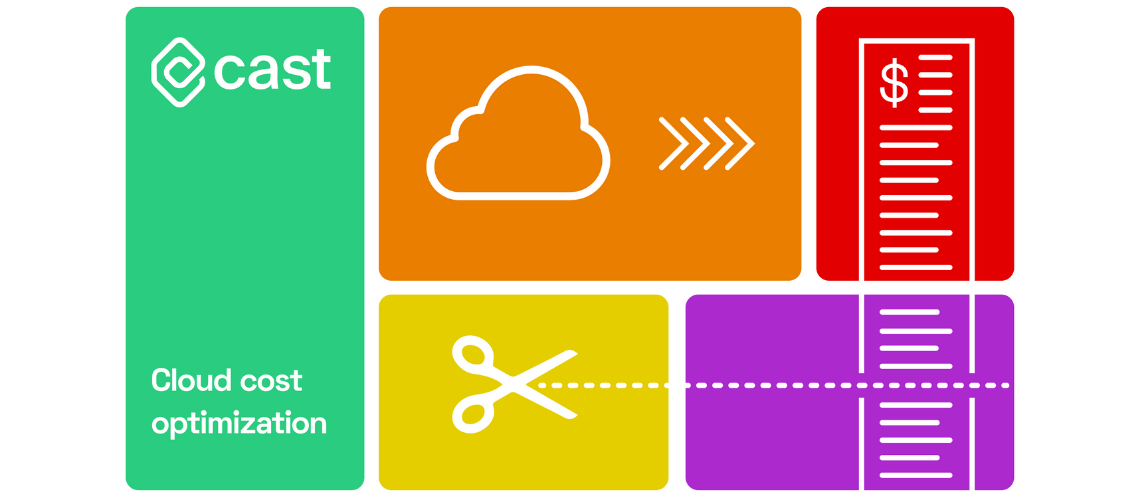Efficient Use Of Cloud Services Is A Saving Tool
2021
Mar 05
Mar 05

Do you remember the time when every single company used to have its own set of servers often visited by a dedicated IT expert? Some organisations would even allocate a whole office room for storing an increasing amount of corporate data.
Nowadays this is has become a picture of the past, while digital data storage in the so-called clouds is becoming a part and parcel of organisations’ everyday life. The global pandemic has fuelled the popularity of digital businesses, speeding up the decisions to move towards cloud computing services. Now clouds are used to store resources of not startups alone, but also of e-commerce shops, technological companies, and conventional businesses.
Indeed, a growing number of new customers start using the cloud computing services of such giants as Microsoft, Amazon, or Google. One of the major challenges currently faced by service users is the progressively growing costs of cloud computing which often go above the corporate budgetary plan.
According to the data of US company Flexera, annual costs for public cloud computing services usually exceed the planned budget by 23%. Vilius Žukauskas, a co-founder and chief operating officer of CAST AI startup, which is developing an artificial intelligence-based cloud computing optimisation platform, is not surprised by this figure as organisations are often unaware of how to cut down on the costs due to inefficient use of cloud services.
“Any costs optimisation starts from a detailed analysis of the invoices received. The invoices for cloud computing services are often long documents that are complex, difficult to understand or compare. Often cloud computing companies use different pricing of the services, for instance, Amazon company calculated the price for certain services by the number of inquiries received, while others – by the number of gigabytes used. If an organisation is using services of different cloud computing service providers it becomes difficult to compare them if there are any overpayments or whether all the services received are used efficiently”, said V. Žukauskas.
Although cloud computing service providers offer various tools allowing for more efficient use of resources, the root cause is usually hidden not in the technological, but in a human factor, i.e., inefficient use of cloud computing services is linked to the lack of competence and experience in how to handle these resources.
“We’ve been repeatedly hearing stories of organisations suffering enormous losses due to inappropriate management of cloud computing services. One of the most notorious cases happened in Adobe company when a software developing team at the time of testing a new product installed a wrong algorithm which augmented the invoices for cloud computing services up to USD 80 thousand per day. It was only after the company received an invoice for over half a million US dollars that the Adobe staff finally realized what has happened. This would not have happened had there been regular monitoring of cloud computing resources and appropriate configuration of system notifications”, said V. Žukauskas.
He pointed out several key reasons why the reserved resources are not used, not fully used, or are overpaid:
- An organisation is not well familiar with the infrastructure of a cloud computing service provider and does not use tools enabling to apply different types of data calculation and storage;
- A too large amount of resources is acquired and forgotten after a while;
- Forgetting to disconnect from the servers while not in use;
- Too little attention given to budgetary control of cloud computing services;
- Inappropriately configured notifications and alerts in the cloud computing platform.
Organisations intending to optimise cloud computing costs should assess the scope and nature of the resources that they really need. Admittedly, forecasting the future scope of services is a relatively difficult and yet a doable task. Most importantly, systemic and regular monitoring has to be carried out and reports on the use of resources have to be carefully analysed. Some cloud computing service providers have special tools allowing them to forecast planned expenses several months ahead and get recommendations for savings. The possibility to select what and when is needed is, perhaps, the greatest advantage of cloud computing, but this skill has to be mastered properly.
“Costs modeling is one of the best means of cost optimisation. I would suggest analysing carefully the pricing of a service provider and planning the necessary resources in view of the current stage and budget of each individual project. You should estimate the resources required for all stages of work and the planned expenses; then, in view of the pricing of the service provider, develop a multi-level plan of expenses. By summarising all the data in one location you will find it easier to understand your future needs and trends”, suggested V. Žukauskas.
Not least important is envisaging the peak times of using resources. This can be done by using regular data analysis and forecasting the impact of external factors boosting the user traffic.
“It is important that organisations realized that there can be significant savings while using cloud computing services – what you need is to develop a strategy, use the relevant tools and do this consistently. While organisations may not be successful in their attempts to cut the fees charged by cloud computing service providers, they could at least save by not overpaying for these services”, emphasized V. Žukauskas.

